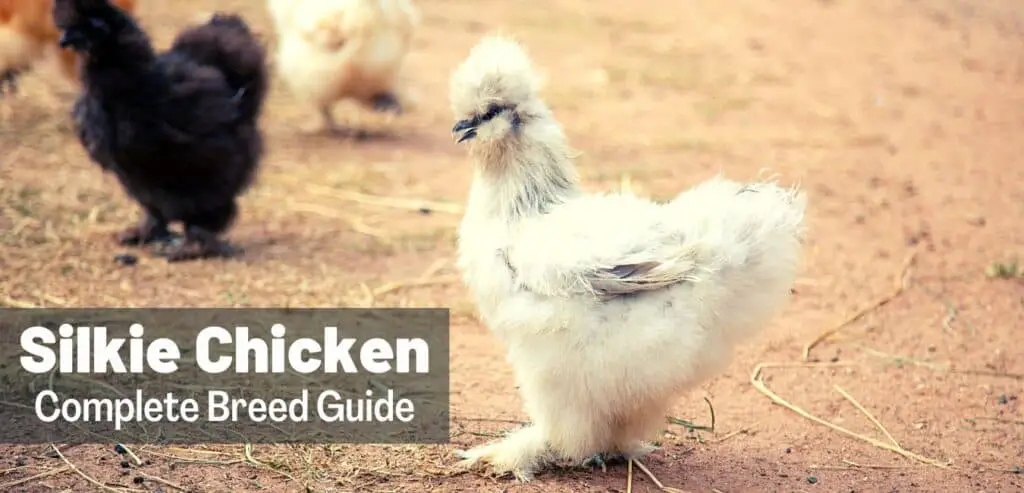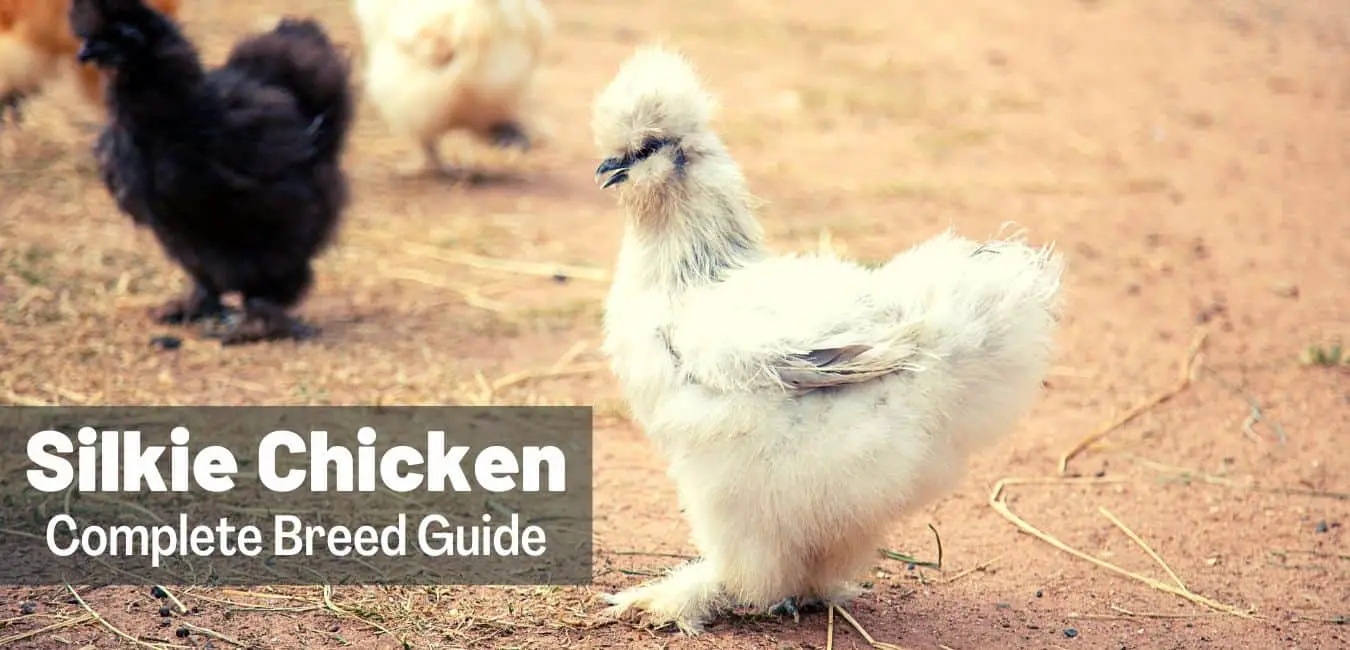Silkie chicken is a breed of small domestic fowl prized for their silky, soft feathers and friendly, docile temperaments.
They are called “Silkie Bantams” because they are smaller than standard breeds and have a more compact, rounded appearance.
Silkies have distinctive black skin and five toes instead of the typical four seen in most chickens, and they are popular in both backyard flocks and the show circuit.
People often refer to them as Silky because of their unusually furry and fluffy plumage, which is said to feel like satin or silk. Silkie are lovely, cute chicken breeds.
The breed has many other uncommon characteristics, from each foot, different skin colors, bones, blue earlobes, or five toes, while most chickens have only 4.
Silkie chicken is seen at poultry shows or appears in various colors. People recognize Silkies for their quiet, friendly temperament in relation to their unique physical features.
It is among a poultry’s most docile. Silkie hens are extraordinarily broody and care for their baby chicks very well.
Although they are good layers of themselves, laying only around 2–3 eggs each week, owing to their broody natural environment.
Further, they frequently used it to hatch eggs from several other breeds or bird species. Silkie chickens are simple for pets to maintain.
These are an ideal choice for children.
History of Silkie Chicken Breed

Regardless of their exact origin, Silkies have been known and prized for their unique appearance and gentle dispositions for centuries.
Many people believe that Silkie bantam chickens originated in ancient Asia, particularly with a strong link to China. That’s why another title, occasionally found for the bird, is Chinese Silkie chicken.
There were suggestions of other areas in Southeast Asia, like India or Java, as potentialities. Silkies’ best early surviving written account arrives from Marco Polo, who published a 13th-century “furry chicken” throughout his Asian travels.
They were first introduced to Europe in the 1500s and eventually made their way to America, where they became popular as ornamental and exhibition birds.
In 1598, Ulisse Aldrovandi, the writer, and naturalist at Bologna College, authored the comprehensive treatise on chickens that is still being read or praised today. He spoke of “wool-bearing chickens”, so those “hair such as the hair of a black cat.”
Silkies went west, and in 1874 they were welcomed into the North American elegance Standard. We’re happy to find Silkies worldwide, so in the backyard many flocks!
That’s why ultimately people still love keeping Silkie Bantams as pets because they’re so cute.
Also read: 10 Types of Black Chickens
Silkie Recognized Variety
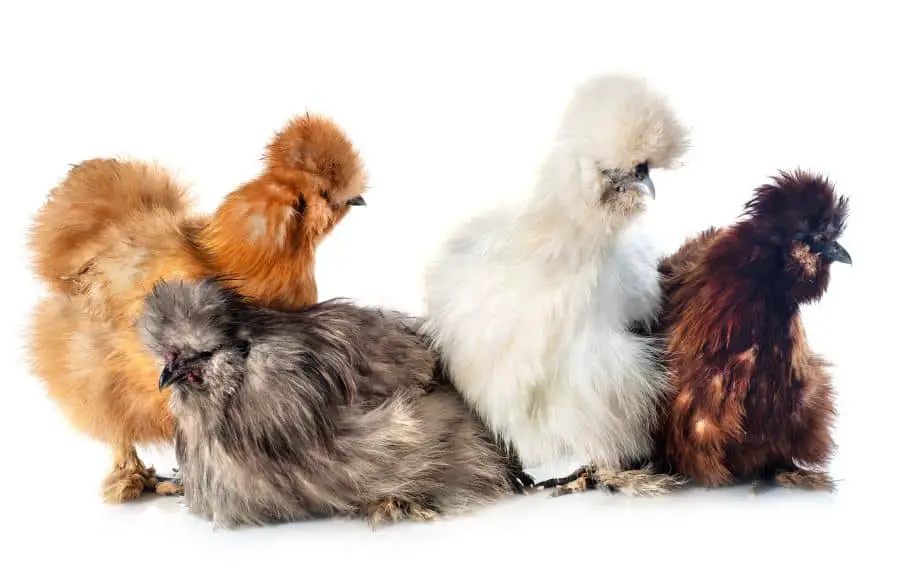
Silkie-recognized varieties are found in both Beared and Non-Beared only for bantam-size fowl.
Here is a list of recognized Silkie chicken varieties, including both bearded and non-bearded varieties:
Bearded Varieties:
- Black Bearded Silkie
- White Bearded Silkie
- Blue Bearded Silkie
- Buff Bearded Silkie
- Gray Bearded Silkie
- Partridge Bearded Silkie
- Splash Bearded Silkie
- Self Blue Bearded Silkie (also known as Lavender Bearded Silkie)
Non-Bearded Varieties:
- Black Non-Bearded Silkie
- White Non-Bearded Silkie
- Blue Non-Bearded Silkie
- Buff Non-Bearded Silkie
- Gray Non-Bearded Silkie
- Partridge Non-Bearded Silkie
- Splash Non-Bearded Silkie
- Self Blue Non-Bearded Silkie (also known as Lavender Non-Bearded Silkie)
The American Poultry Association (APA) recognizes the following Silkie Bantam varieties in the United States, Both Bearded and Non-Bearded:
- Black Silkie Bantam: Silkie Bantams with solid black plumage throughout, including the skin, beak, and legs.
- White Silkie Bantam: Silkie Bantams with pure white feathers and white skin, beak, and legs.
- Blue Silkie Bantam: Silkie Bantams with a bluish-gray coloration. The feathers are soft, smoky blue, and the skin and beak are slate blue. The legs may be bluish-gray or black.
- Buff Silkie Bantam: Silkie Bantams with a rich, golden buff color throughout their plumage. The skin, beak, and legs are typically a pale yellow or beige color.
- Gray Silkie Bantam: Silkie Bantams with a solid gray coloration throughout. The skin, beak, and legs are typically slate blue or black.
- Partridge Silkie Bantam: Silkie Bantams with a distinctive pattern of reddish-brown and black feathers. The neck and saddle feathers are usually reddish brown, while the body feathers are black. The skin is typically dark, and the beak and legs may be dark gray or black.
- Splash Silkie Bantam: Silkie Bantams with a unique pattern of white and gray or black feathers. The overall appearance is mottled or splashed. The skin is typically white or bluish-white, and the beak and legs may be blue or black.
British Poultry Association (BPA) recognizes the following varieties of Silkie Chickens Large Fowl:
- Black: Silkie chickens with solid black plumage throughout, including the skin, beak, and legs.
- White: Silkie chickens with pure white feathers and white skin, beak, and legs.
- Blue: Silkie chickens with a bluish-gray coloration. The feathers are soft, smoky blue, and the skin and beak are slate blue. The legs may be bluish-gray or black.
- Buff: Silkie chickens with a rich, golden buff color throughout their plumage. The skin, beak, and legs are typically a pale yellow or beige color.
- Partridge: Silkie chickens with a striking pattern of reddish-brown and black feathers. The neck and saddle feathers are usually reddish brown, while the body feathers are black. The skin is typically dark, and the beak and legs may be dark gray or black.
- Splash: Silkie chickens with a distinctive pattern of white and gray or black feathers. The overall appearance is mottled or splashed. The skin is typically white or bluish-white, and the beak and legs may be blue or black.
Temperament of Silkie Bantams
The good thing about the Silkie Bantam chicken is that they are incredibly calm and gentle.
They are one of the most affectionate and gentle breeds of chickens and are often kept as pets and for egg production.
Handling Silkies is usually a breeze and they’re often called “lap chickens” because they love perching on their owner’s lap for attention and affection.
People also know them for being super calming, and sometimes they use them as therapy animals to help calm and comfort people.
Despite their gentle nature, Silkies can still be wary of new people or unfamiliar environments; therefore, handling them with care and giving them time to adjust to new situations is important.
Silkie Eggs Color, Size, Count

Silkie chickens are average egg layers. They lay at 7–8 months and stop laying eggs after 2–3 years. The Silkie hens lay about 100–120 eggs per year.
The eggs of Silkie hens are white to cream. You may see tinted colors in a few chickens. The bantam hens lay small eggs, whereas the standard fowl lay large eggs.
Silkie hens love to go broody. The training is in their gene, so they efficiently sit on their eggs and hatch their eggs. Silkies make good mothers.
The Lifespan of Silkie Chicken
On average, Bantam, and Standard Silkie chickens have a lifespan of around 7 to 10 years. However, with proper care and management, some Silkies have lived even longer, occasionally reaching 12 years or more.
Appearance of Silkie Chickens

The most distinguishing feature of Silkie bantam chickens is their silky, soft hairy feathers. They have a rounded, plump body with a small head, beak, and large, bright eyes.
One of the most notable features of the Silkie chicken is its soft, fluffy feathers. Unlike other chickens, Silkie feathers lack the barbicels that hold the feather strands together, giving them their unique “fur-like” appearance.
Silkie chickens also have black skin, bones, and dark meat, a delicacy in some countries. Their comb is a walnut-type, and they have small wattles.
One of the most distinctive features of the Silkie chicken is its feathered feet and extra toe, giving them five toes per foot.
Silkie Chicken Size and Weight
Bantam Silkie Chickens:
- Rooster (Cockerel): Bantam Silkie roosters typically weigh around 1.8 to 2.3 pounds (0.8 to 1.0 kg).
- Hen (Pullet): Bantam Silkie hens weigh around 1.3 to 1.8 pounds (0.6 to 0.8 kg).
Standard Silkie Chickens:
- Rooster (Cockerel): Standard Silkie roosters are larger than Bantam Silkies and can weigh between 3.5 to 4.5 pounds (1.6 to 2.0 kg).
- Hen (Pullet): Standard Silkie hens typically weigh around 2.5 to 3.5 pounds (1.1 to 1.6 kg).
It’s important to note that these weight ranges are approximate and can vary slightly depending on genetics, diet, and individual variation.
Silkie chickens earn the reputation of being a small breed, with the Bantam size being smaller and the Standard size slightly larger than other chicken breeds.
Characteristics of Silkies
Many distinctive physical and behavioral characteristics set Silkie bantam chickens apart from other breeds of domestic fowl. Some of the most notable characteristics include the following:
- Soft, silky feathers: People often describe Silkies as having a unique feather texture that is soft and downy, making them appear “fluffy” or “feather-duster-like.”
- Five toes: Silkies have an extra toe on each foot, giving them five instead of the typical four found in most chickens.
- Black skin and bones: Silkies have black skin, bones, and meat, a unique feature among domestic fowl.
- Gentle temperament: People know Silkies for their friendly, docile temperaments and often describe them as one of the most affectionate and gentle breeds of chickens.
- Good layers: While people typically keep Silkies as ornamental birds, they also lay small, creamy-colored eggs.
- Unique appearance: With their soft feathers, black skin, and bones, and extra toes, Silkie Bantams are a visually distinctive and appealing breed of chicken.
Overall, people prize Silkie Bantams for their unique appearance and gentle temperaments, making them great pets for those who enjoy keeping chickens.
10 Fun Facts About Silkie Chickens
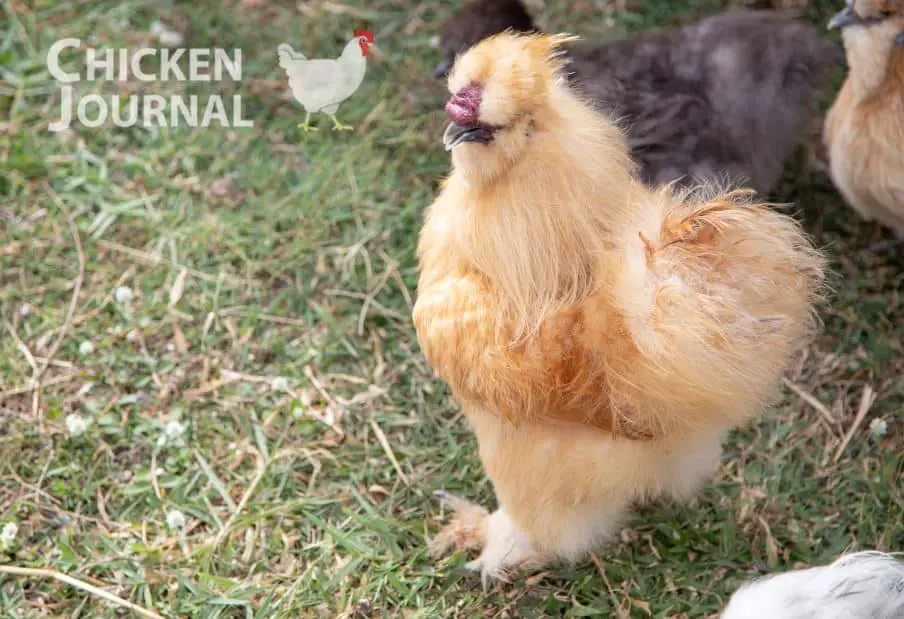
Here are a few facts about Silkie bantam chickens. The Silkie Bantam chicken differs from other breeds in a few ways.
- Silkie chickens are sometimes called “the lapdog of the chicken world.”
- People in Asian medicine frequently use them for their believed healing properties.
- In certain cultures, they are seen as symbols of good luck. People often give them as gifts for weddings and other special events.
- Various movies and TV shows, including “Parks and Recreation” and “The Ellen Show,” have featured Silkie chickens.
- Nursing homes and hospitals sometimes use them as therapy animals.
- Silkie chickens’ unique feathers lack barbicels, which means they cannot fly.
- They have five toes instead of the usual four on each foot.
- Silkie roosters have a reputation for their loud and distinctive crowing.
- The Chinese name for Silkie chickens is “wu gu ji,” meaning “black-boned chicken.”
- The APA recognized Silkie chickens as a standard breed in 1874.
5 Reasons to Raise Silkie Bantam Chickens
Some key reasons Silkie bantam chickens make such great pets are:
1. Friendly and gentle temperament
One of the major advantages of raising Silkie chickens is their friendly and gentle nature. They have a calm and sociable temperament, which makes them wonderful pets and a great addition to any backyard flock.
People know Silkie chickens for their docile and easy-to-handle nature, which makes them suitable for families, including children. They often enjoy human interaction and are less likely to behave aggressively than other chicken breeds.
2. Unique appearance
Silkie chickens were instantly recognizable because of their unique appearance. Their soft, fluffy plumage in other chicken breeds lacks the typical hard shaft, giving them a distinct and “silky” texture.
This fluffy plumage, dark skin, blue earlobes, and feathered feet set them apart and makes them highly sought after by poultry enthusiasts. Raising Silkie chickens can be a rewarding experience simply for the joy of observing their captivating and unusual appearance.
3. Excellent mothers
Silkie hens have a strong broody instinct, so they naturally sit on and hatch eggs. They exhibit great dedication and attentiveness as mothers, often displaying great care and protective behavior toward their chicks.
This makes Silkie chickens an ideal choice if you are interested in the natural incubation and hatching of eggs. Their broodiness and mothering abilities can be beneficial for preserving rare or heritage poultry breeds.
4. Adaptable to various environments
Silkie chickens are known for their adaptability to different climates and living conditions. They can tolerate various temperatures and thrive in hot and cold climates.
Their fluffy feathers provide insulation and protection against cold weather, while their smaller size helps them cope with heat more effectively. Whether you live in a warm or cold region, Silkie chickens can adapt well and continue to thrive.
5. Low maintenance
When it comes to chicken breeds, Silkie chickens are known for being relatively low maintenance. Because of their small size, they require less feed and space. Although lower than some commercial breeds, their moderate egg production still provides a steady supply of eggs for personal consumption.
Silkie chickens are healthy and resilient, requiring fewer interventions and veterinary care. These factors make Silkie chickens an ideal choice for backyard chicken keepers seeking a breed that is easy to care for and requires less intensive management.
Overall, the friendly temperament, unique appearance, excellent mothering instincts, adaptability, and low maintenance requirements of Silkie chickens make them a popular choice for novice and experienced poultry keepers.
Problems in raising Silkie chicken
1. Respiratory issues
Silkie chickens are more susceptible to respiratory infections compared to some other breeds. Their fluffy plumage can make it easier for dust, dander, and airborne particles to become trapped and irritate their respiratory system.
Proper ventilation in their coop is essential to maintain good air quality, and regular cleaning of bedding and coop surfaces helps reduce the risk of respiratory issues.
2. External parasites
Silkie chickens’ fluffy feathers provide hiding spots for external parasites like mites and lice. These parasites can cause irritation, feather damage, and bird discomfort.
Regular inspection of their feathers and skin is important to detect and address any infestations promptly. Treatment options include using poultry-friendly insecticides, dusting powders, or natural remedies recommended by veterinarians.
3. Foot injuries and infections
Silkie chickens have feathered feet, which can make them more susceptible to foot injuries and infections. Their feathers can accumulate dirt, debris, and moisture, leading to sores, bumblefoot (a bacterial infection of the foot), or footpad dermatitis.
It’s crucial to keep their living area clean, provide proper bedding, and regularly inspect their feet for any signs of injury or infection. Prompt treatment, including cleaning, disinfection, and possibly veterinary intervention, is necessary to prevent complications.
4. Egg binding
Like many other chicken breeds, Silkie hens can experience egg binding, which occurs when an egg gets stuck in the reproductive tract and they cannot lay it. This is a serious condition that requires immediate veterinary attention.
Signs of egg binding include lethargy, straining, abdominal distension, and a lack of egg production. Providing a well-balanced diet, ensuring sufficient calcium intake, and monitoring their reproductive health can help reduce the risk of egg binding.
5. Heat stress
Silkie chickens may struggle in extreme heat because of their dense plumage and limited ability to dissipate body heat. They are more prone to heat stress, leading to dehydration, reduced egg production, or even death in severe cases.
To prevent heat stress, provide shade in their living area, ensure good air circulation, and offer cool and fresh water. Consider using misters or fans during hot weather to help keep them cool.
6. Getting wet in the rain
Silkie chickens have fluffy feathers that absorb and keep moisture more easily than other breeds. This can cause their feathers to become heavy and clump when wet.
While getting wet in the rain is not a direct health issue, the heavy, and damp feathers can make them more susceptible to hypothermia, especially in cooler weather.
Silkie chickens need protection from rain or wet conditions, so they should have shelter or a covered area. This helps prevent them from getting chilled or stressed from temperature.
Tips To Raise and Care Silkie Chickens
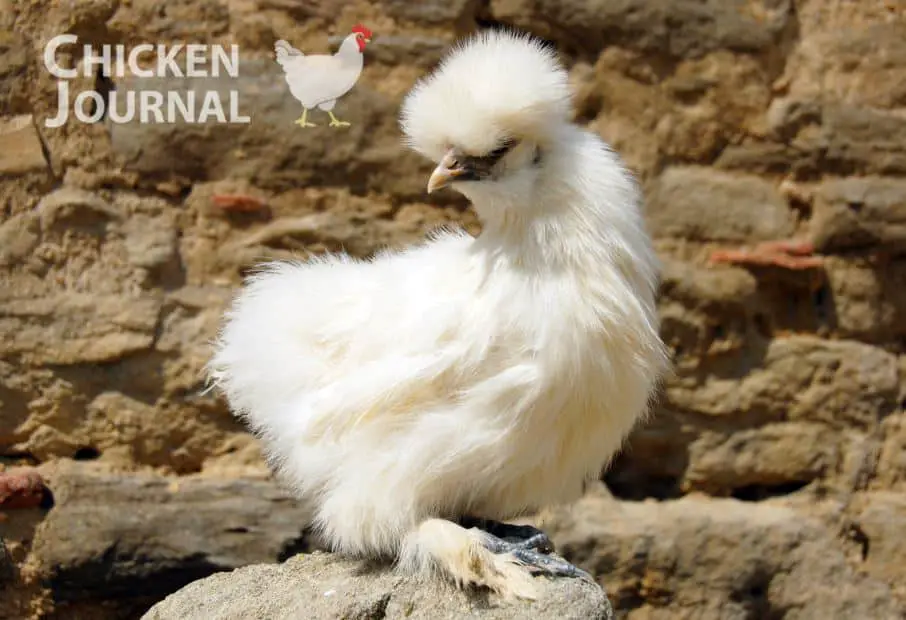
- Provide a secure and spacious coop: Silkie chickens should have a coop that is safe from predators and provides enough space to move around, perch, and roost comfortably. Ensure the coop is well built, with sturdy walls, predator-proof fencing, and a secure door.
- Maintain a clean environment: Regularly clean the coop to prevent the build-up of dirt, droppings, and parasites. Replace bedding regularly and provide clean nesting boxes. A clean environment helps prevent the spread of diseases and keeps your Silkie chickens healthy.
- Offer a balanced diet: Silkie chickens require a balanced diet to meet their nutritional needs. Please provide them with high-quality poultry feed appropriate for their age and stage of life. Supplement their diet with fresh fruits, vegetables, and occasional treats. Ensure they have access to clean, fresh water.
- Provide socialization: Silkie chickens are friendly and enjoy human interaction. Spend time with them daily, talk to them, and gently handle them to help them become accustomed to human presence. Also, allow them to interact with other chickens to promote socialization and prevent boredom.
- Monitor health regularly: Regularly observe your Silkie chickens for signs of illness or injury. Look for changes in behavior, appetite, feather condition, or abnormalities. Promptly address any health issues by consulting a veterinarian or taking appropriate measures.
- Provide proper ventilation: Silkie chickens are prone to respiratory issues, so ensure their coop has proper ventilation. Good airflow helps prevent the accumulation of moisture, ammonia, and airborne pathogens that can cause respiratory infections. Provide windows, vents, or fans to maintain fresh air circulation.
- Protect from predators: Silkie chickens are vulnerable to predators such as raccoons, foxes, and hawks. Secure their coop with strong fencing, bury wire mesh to prevent digging, and use predator-proof locks on doors and windows. Consider using motion-activated lights or alarms to deter nocturnal predators.
- Offer dust baths: Silkie chickens require dust baths to keep their feathers clean and free from parasites. Provide a designated area with dry soil or sand where they can roll and bathe themselves. You can also add diatomaceous earth, which helps control external parasites.
- Keep an eye on their feet: Silkie chickens have feathered feet requiring extra care. Regularly inspect their feet for injuries, cuts, or signs of infection. Trim overgrown feathers around their feet and ensure the coop floor is free from sharp objects or rough surfaces that could cause foot problems.
- Be prepared for broodiness: Silkie hens possess a strong broodiness, with a desire to sit on and hatch eggs. If you’re not interested in breeding, have a plan to manage broody hens. This may involve providing separate nesting areas or using dummy eggs to discourage extended broodiness.
By following these tips, you can ensure the well-being and happiness of your Silkie chickens. Regular care, health attention, and a clean, safe environment will help them thrive and enjoy a long, fulfilling life.
FAQs About Silkie Chickens
Can Silkie chickens fly?
Silkie chickens have limited flying abilities because of their fluffy feather structure, but they can fly short distances if necessary.
Are Silkie chickens cold hardy?
Silkie chickens are cold hardy and can tolerate cold temperatures, but they still need protection from extreme weather, especially freezing temperatures and harsh winds.
How many eggs do Silkie chickens lay?
Silkie hens produce around 100 to 150 small to medium-sized eggs per year and are more suitable for ornamental purposes or brooding than for high egg production.
Are Silkie chickens good pets?
Yes, people consider Silkie chickens excellent pets because they have a friendly and gentle temperament. They actively seek human interaction and people often desire them for their unique appearance and calm nature.
Why is Silkie chicken meat black?
Silkie chickens have black skin, bones, and dark-colored meat because of a genetic trait called fibromelanosis. Although the color may seem unusual to some, certain culinary traditions value it as a desirable feature.
How many toes do Silkie chickens have?
Silkie chickens have an extra toe, totaling five toes on each foot, instead of the usual four. This extra toe is a characteristic trait of the breed.
How often do Silkie chickens lay eggs?
Silkie chickens lay eggs regularly but in smaller quantities compared to other breeds. On average, they produce around 100 to 150 eggs per year, which means their egg-laying frequency is not as high as some other chicken breeds.
Can Silkie chickens get wet?
Silkie chickens can get wet, so it’s important to keep their living area dry and provide shelter during rain to avoid health problems.
Are Silkie chickens bantams?
Yes, Silkie chickens come in both bantam and standard sizes. Bantam Silkies are smaller compared to the standard Silkies, making them popular choices for those with limited space or as ornamental birds.
Conclusion: Why choose Silkie chickens for your backyard flock?
Silkie chickens are undoubtedly one of the unique and charming poultry breeds.
Their soft, fluffy feathers, gentle temperament, and distinctive characteristics make them excellent pets and additions to any backyard flock.
They are adaptable to various living conditions, require low maintenance, and are excellent mothers. Whether you’re a seasoned chicken keeper or just starting, Silkie chickens are a breed worth considering.
Silkie chickens will provide you with years of companionship, entertainment, and even fresh eggs with proper care and attention.
